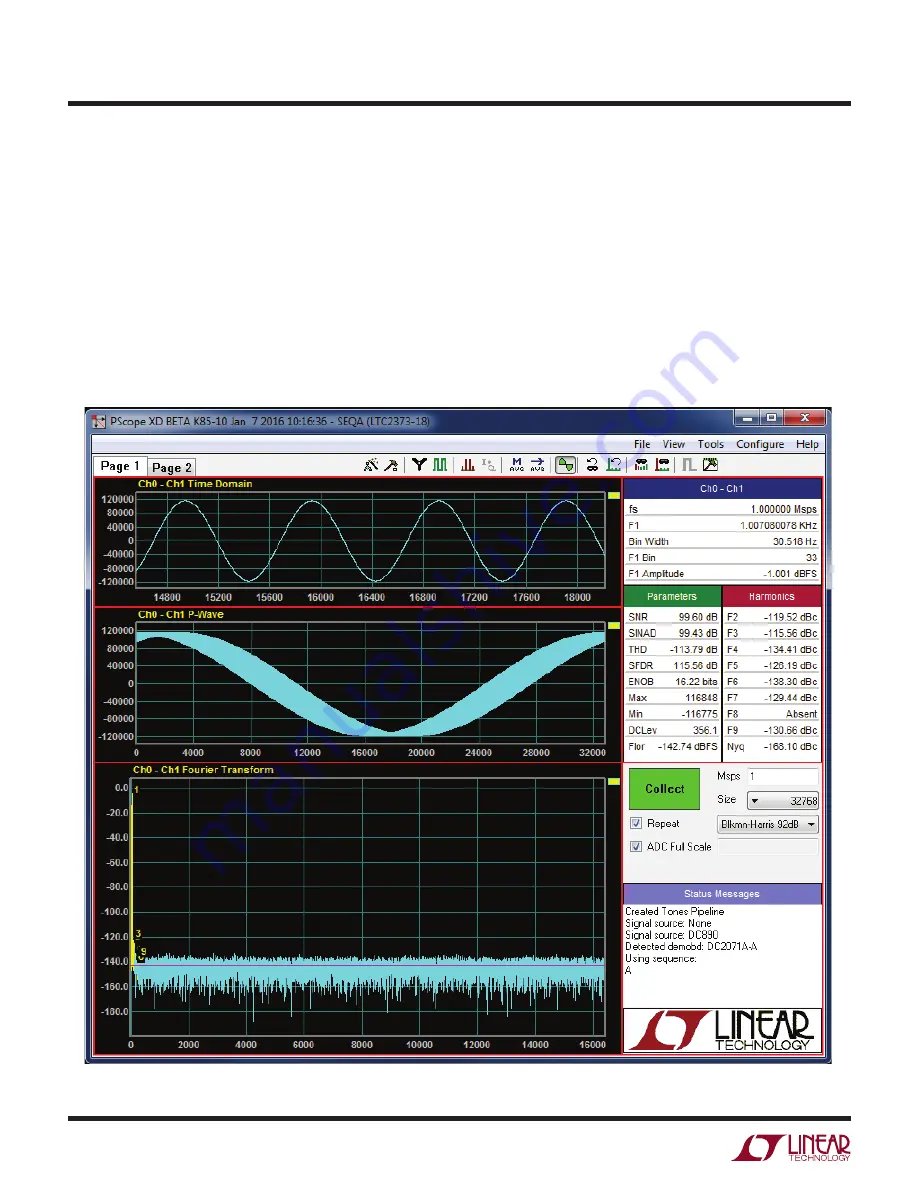
8
dc2071afc
DEMO MANUAL DC2071A
DC890 Data Collection
For SINAD, THD or SNR testing, a low noise, low distortion
generator such as the B&K Type 1051 or Stanford Research
SR1 should be used. A low jitter RF oscillator such as the
Rohde & Schwarz SMB100A or DC1216A-A high speed
clock source is used to drive the clock input. This demo
board is tested in-house by attempting to duplicate the
FFT plot shown in the Typical Performance Characteristics
section of the LTC2373-18 data sheet. This involves using
a 62MHz clock source, along with a sinusoidal generator
at a frequency of approximately 1kHz. The input signal
level is approximately –1dBFS. A typical FFT obtained
with DC2071A is shown in Figure 7. Note that to calculate
the real SNR, the signal level (F1 amplitude = –1.001dB)
has to be added back to the SNR that PScope displays.
With the example shown in Figure 7 this means that the
actual SNR would be 100.60dB instead of the 99.60dB that
PScope displays. Taking the RMS sum of the recalculated
SNR and the THD yields a SINAD of 100.4dB which is fairly
close to the typical number for this ADC.
Figure 7. PScope Screen Shot
DC2071A SETUP












